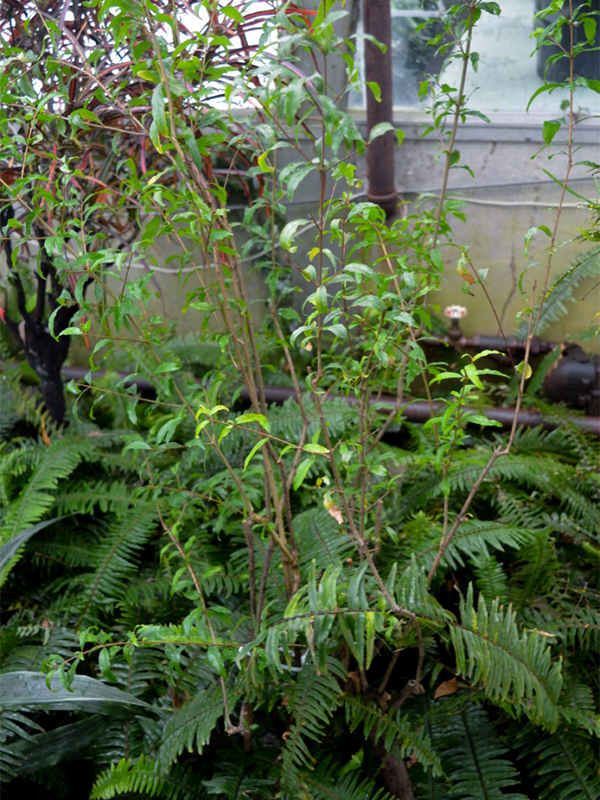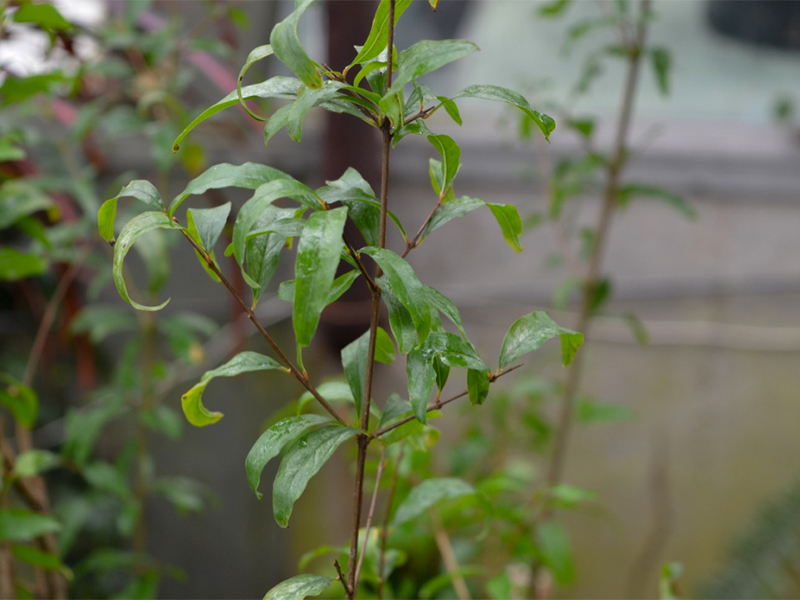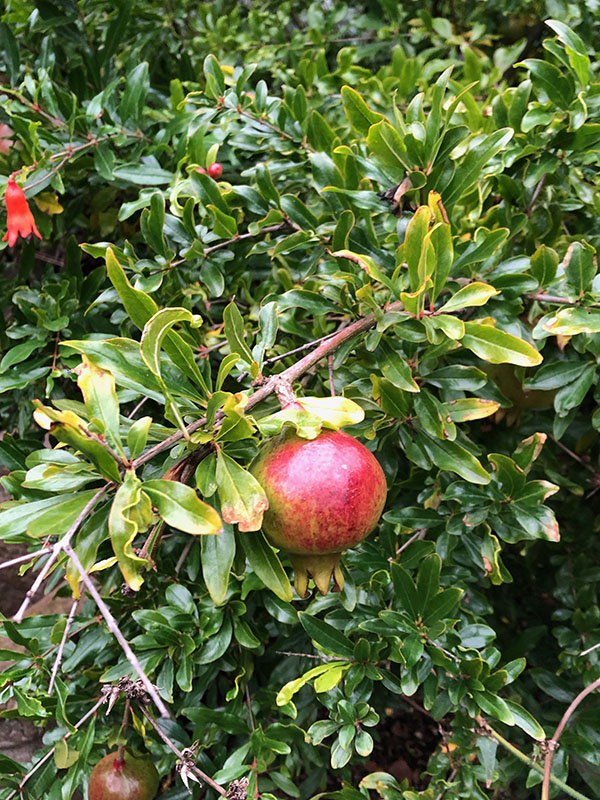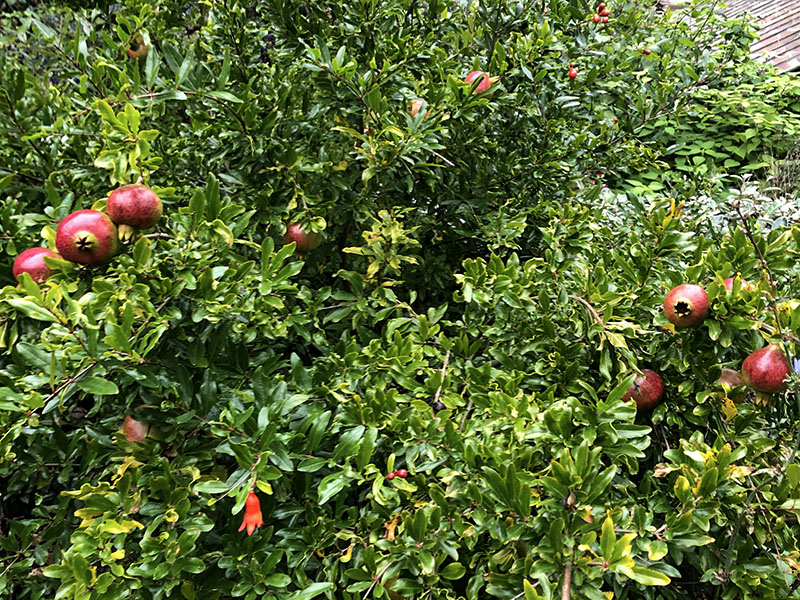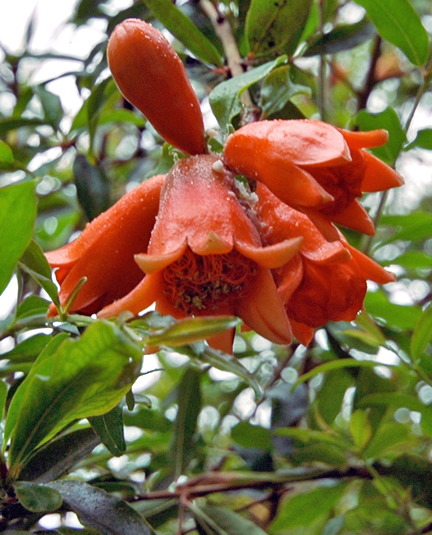
Tropicals > Punica > Punica granatum > Punica granatum
Punica granatum
Pomegranate, Carthaginian Apple, Granada
Origin: Middle and western Asia.
| Family |
| Lythraceae |
| Genus |
| Punica |
| Species |
| granatum |
| Category |
| Tropicals |
| Type |
| Tree (deciduous), Tree (evergreen), Shrub (deciduous), Shrub (evergreen) |
| Pronunciation |
| USDA Hardiness Zone |
| 8 - 11 |
| Canadian Hardiness Zone |
| Requires cold season protection under glass. |
| RHS Hardiness Zone |
| H1c - H5 |
| Temperature (°C) |
| -10 - 10 |
| Temperature (°F) |
| 14 - 50 |
| Height |
| 1.8 - 6 m |
| Spread |
| 1.2 - 4.5 m |
Photographs
Description and Growing Information
Flowering Period
| General Description |
| Deciduous shrub or small tree that is evergreen in tropical areas but may be deciduous at the edge of its range and is grown as both an ornamental plant and for it’s edible fruit. |
| Landscape |
| Where winter hardy, site in beds and borders as a specimen/accent, hedge or planted in Mediterranean style gardens. Where not winter hardy, grow in containers which are overwintered indoors. |
| Cultivation |
| Best grown in full sun with rich, well-drained soil. Keep soil dry to medium moisture, and water regularly. |
| Shape |
| Upright, and bushy. |
| Growth |
| Medium |
| Pests |
| Pomegranate butterfly, Virachola isocrates, and the leaf-footed bug, Leptoglossus zonatus. In wetter areas, they can be prone to root decay from fungal diseases. |
| Habitat |
| Mountain areas. |
| Leaf Description |
| The leaves are opposite or sub-opposite, narrow oblong, entire, 3 - 7 cm long and 2 cm wide. |
| Flower Description |
| The flowers are trumpet-shaped, 3 cm in diameter, growing either singly or in clusters at the branch ends. Each flower typically has four to five petals, but often more on cultivated plants. |
| Fruit Description |
| The edible fruit is a berry, 5 - 12 cm in diameter with a rounded hexagonal shape. It has thick skin and around 600 seeds. Each seed has a surrounding water-laden pulp. |
| Colour Description |
| Leaves are medium green, turning yellow in autumn when in non-tropical areas. Flowers are bright red to red-orange. Fruit skin and seeds are red to red-orange, with the pulp ranging from white to deep red or purple. |
| Texture Description |
| Leaves are glossy. |
| Notable Specimens |
| Centennial Conservatory, Thunder Bay, Ontario, Canada. Chelsea Physic Garden, London, United Kingdom. |
| Propagation |
| By seed and air layering, but most commonly propagated by hardwood cuttings to avoid the genetic variation of seedlings. Cannot propagate by grafting. |
